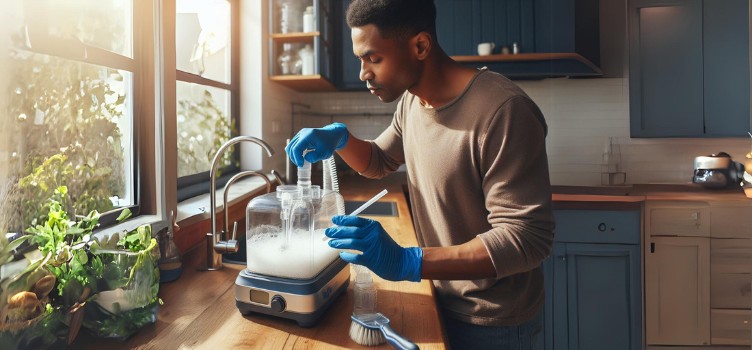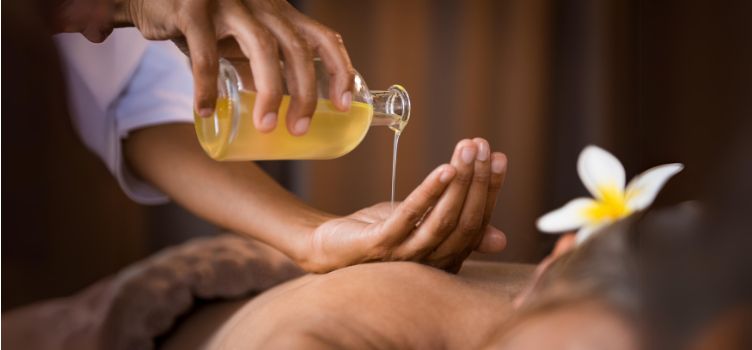When it comes to managing sleep apnea and other respiratory disorders, Continuous Positive Airway Pressure (CPAP) machines stand as invaluable tools. However, amidst the diligent care for the machine itself, one crucial component often gets overlooked: the water tank. Despite its seemingly secondary role, the CPAP water tank plays a pivotal part in ensuring optimal therapy and respiratory health. Neglecting its cleanliness can lead to a host of issues, from bacterial growth to compromised therapy effectiveness. In this article, we’ll delve into the significance of maintaining a clean CPAP water tank and provide essential tips on effectively accomplishing this vital task. Let’s explore the essential steps to maintain clean and hygienic CPAP equipment.

Some Common Problems With a Dirty CPAP Water Tank
A dirty CPAP water tank can lead to several issues that affect your health and your therapy’s effectiveness. Here are some common problems associated with a dirty water tank:
Why Cleaning Your CPAP Water Tank is Essential
The importance of cleaning your CPAP water tank cannot be overstated. Without regular cleaning, the stagnant water becomes a breeding ground for bacteria, mold, and other harmful pathogens. When you use your CPAP machine, these contaminants can be introduced into your airway, potentially leading to respiratory infections, allergies, or other health issues. Cleaning your CPAP water tank is crucial for several reasons:
How do I know if my CPAP water tank needs cleaning?
If you suspect that your CPAP water tank might be dirty, here are some signs to look out for:
Supplies Needed for Cleaning CPAP Water Tank
Cleaning your CPAP water tank is a straightforward process that requires minimal supplies. You’ll need mild soap, warm water, and a soft cloth or sponge for washing. Alternatively, you can use specialized CPAP cleaning products available on the market. However, it’s essential to avoid harsh chemicals or abrasive materials that could damage the components of your CPAP equipment. To effectively clean your CPAP water tank, you’ll need a few essential supplies. Here’s what you’ll require:
Step-by-Step Guide to Cleaning Your CPAP Water Tank
After knowing all the facts about why you need to clean your CPAP water tank, you may wonder how to clean this tank. Here’s a step-by-step guide to cleaning your CPAP water tank:
- Disconnect your water tank from your CPAP machine.
- Remove every last drop of water from the tank.
- If your water tank is designed to come apart, consider disassembling it for easier cleaning. However, most modern water tanks do not require disassembly.
- Fill a sink or basin with warm water.
- Add a few drops of mild antibacterial dish soap to the water.
- Submerge the water tank in the soapy water.
- Use a soft cloth to wipe down the inside and outside surfaces of the tank.
- Pay attention to corners, crevices, and any areas with visible residue.
- Wash completely with clean water to eliminate the soap residue.
- Rinse the water tank under running water until all the soap is washed away.
- Ensure there are no lingering suds or residue.
- Gently shake the tank carefully to remove any excess water.
- Place the water tank on a clean, dry surface.
- Let it air-dry completely. This is crucial to preventing bacterial growth.
- Alternatively, use a clean, non-abrasive towel to pat it dry.
- Once the water tank is completely dry, reassemble it if you had disassembled it earlier.
- Make sure all components fit securely.
How often should I clean my CPAP water tank?
You should clean your CPAP water tank at least once a week to maintain hygiene and ensure effective therapy. Regular cleaning helps prevent exposure to bacteria, mold, and allergens. Neglecting to clean the water tank can also shorten the life of your CPAP machine.
Additional Tips for Effective Cleaning
Common Mistakes to Avoid CPAP water tank
When cleaning your CPAP water tank, it’s essential to avoid common mistakes to ensure effective hygiene and prolong the life of your equipment. Here are some dos and don’ts:
Dos:
- Do use antibacterial dish soap or plain white vinegar for cleaning.
- Wipe down the inside and outside surfaces thoroughly with a cloth soaked in hot, soapy water.
- Some manufacturers recommend using diluted vinegar instead of soap. Check your CPAP’s instructions.
- Allow the water tank to air dry completely before putting it back in the machine.
- Cleaning in the morning ensures it’s dry when you need it.
- Complete drying prevents the risk of bacterial growth.
- If you’re on an extended trip or lack access to regular cleaning supplies, CPAP cleaning wipes can be a convenient solution.
- They work well for cleaning the water tank, tube, and mask.
- Some people prefer the convenience of CPAP-sanitizing devices.
- These machines clean your equipment without water or disassembly.
- Always refer to the instructions provided by the manufacturer to ensure compatibility.
Don’ts:
- Never use harsh chemicals on your water tank.
- Stick to soap or diluted vinegar to prevent damage.
- Avoid using tap water in your CPAP, especially if you live in an area with hard water.
- Use distilled water to prevent mineral buildup inside your machine.
- Don’t dry the tank with a cloth towel.
- Lint from the towel can accumulate inside the tank and cause problems.
Conclusion
In the journey towards managing respiratory health with CPAP therapy, the significance of clean water tanks cannot be overstated. As we conclude our exploration, it’s vital to recap the crucial role these often-overlooked components play in maintaining effective therapy and preventing potential health risks.
By prioritizing the cleanliness of CPAP water tanks, users not only ensure the optimal performance of their machines but also safeguard their respiratory well-being. Let’s embrace the habit of regular cleaning, turning it into a cornerstone of our CPAP care routine. Together, let’s prioritize hygiene and breathe easier, ensuring a healthier tomorrow, one clean CPAP water tank at a time.
🔗Related Ecssla -Health Tips & Tricks:
- How Long Do Breathing Treatments Last
- What is The Purpose of Breathing Exercises?
- How to Protect Your Knees on the Elliptical – Reason and Solutions
FAQs:
It’s recommended to clean your CPAP water tank at least once a week to prevent bacterial growth and ensure hygiene.
While tap water is acceptable for use in CPAP machines, using distilled water can help prevent mineral buildup and extend the lifespan of your equipment.
While specialized CPAP cleaning products are available, mild soap and warm water are sufficient for cleaning your CPAP water tank effectively.
If you notice signs of wear or damage on your CPAP water tank, such as cracks or leaks, it’s essential to replace the damaged components promptly to ensure optimal performance.
Yes, drying the components of your CPAP water tank thoroughly is crucial to prevent bacterial growth and mold formation.


Leave a Reply